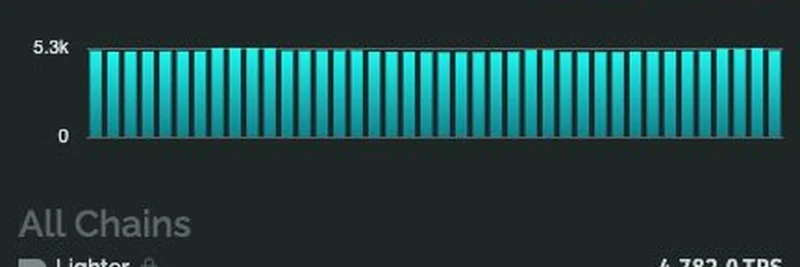In the fast-paced world of blockchain, where speed often equals success, a new player called Lighter has been turning heads with its eye-popping transaction per second (TPS) numbers. But not everyone is buying the hype. A recent thread on X from Chase Ebner, a notable figure at Solana Mobile, has sparked a debate about whether Lighter's metrics are the real deal or just clever accounting.
Lighter is a decentralized perpetuals exchange built as a zero-knowledge (ZK) rollup on Ethereum's Layer 2. Think of it as a specialized platform for trading perpetual futures—contracts that let you bet on asset prices without expiration dates—in a trustless, efficient way. It's designed to handle high-speed trading, and recent reports have it clocking over 4,000 TPS, dwarfing even established networks like Base Chain's 100-200 TPS. This surge helped push Ethereum's overall rollup TPS to a record 24,000, as highlighted in recent crypto news Ethereum Breaks 24K TPS Barrier.
Chase's initial post captured the skepticism perfectly: "What the fuck is lighter? Is it just a fake L2? Literally comes out of nowhere doing more tps than all established L2 combined. Look at those numbers lol." Accompanying it was a chart showing Lighter's TPS towering over competitors.
He followed up after some clarification, crediting user @Rahul__Ghangas for pointing out that Lighter counts every individual instruction as a separate transaction. This approach, Chase argues, inflates the TPS figure, making direct comparisons to chains like Solana or other L2s unfair. Solana, for context, is a high-throughput Layer 1 blockchain known for its speed in handling meme token launches and DeFi activities, often processing thousands of TPS without this granular counting method.
This isn't just nitpicking—TPS is a key metric for blockchain performance, especially in DeFi and meme token ecosystems where low latency can make or break a trade. If Lighter's numbers are padded, it could mislead developers and traders looking for truly scalable platforms. On the flip side, Lighter's team emphasizes its application-specific design, which optimizes for trading by using state diffs and ZK proofs to keep data light—publishing only about 100MB daily while maintaining security Rollups Daily TPS Surges.
The thread drew quick responses, with one user questioning why it's labeled an L2 and another praising the insight. It highlights a broader conversation in crypto: as projects like Lighter push boundaries, transparency in metrics becomes crucial. For meme token enthusiasts, this matters because perp DEXes like Lighter could become go-to spots for leveraged trading on volatile assets, but only if the underlying tech holds up under scrutiny.
Whether Lighter is revolutionizing Ethereum scaling or just gaming the stats, it's a reminder to dig deeper into the numbers. Keep an eye on updates from sources like L2BEAT for unbiased breakdowns, and always cross-check claims in this wild world of blockchain innovation.



